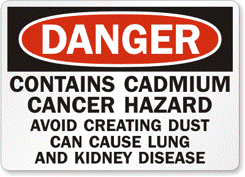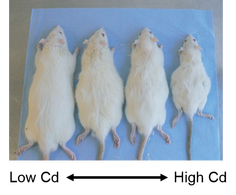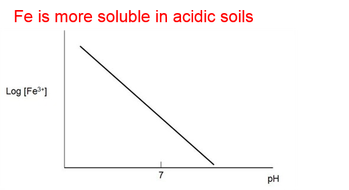Research Interests
One of the essential micronutrients, iron (Fe) is required for photosynthesis, respiration, nitrogen fixation, sulfate assimilation, and chlorophyll and iron (Fe) – sulfur (S) cluster biosynthesis in plants.(1) Fe-deficiency in plants induces intercostal leaf chlorosis, which in turn causes significant yield losses of crops in the field.(2) Since the main source of Fe in human diet is plants, low Fe levels in plants also compromises human health. Being the most common cause of anemia worldwide, Fe deficiency in humans is one of the crucial problems of both developed and developing countries.(3) Therefore, understanding novel regulatory mechanisms of Fe utilization in plants is essential for biofortification of crop plants as better iron sources. In last two decades, tremendous efforts were invested in characterization of networks involved in Fe uptake and translocation in plants. Yet, how these networks are connected to each other and what other factors are involved in the regulation of these networks is still an open question.
Fe deficiency anemia affects >2 billion people worldwide causing ~ 1 million deaths. (WHO, The World Health Report, 2002)
Fe deficiency is especially seen in pregnant women and infants more often (50% of pregnant women and infants in Turkey). (Harma M et al. (2004) T Clin J Gynecol Obstet 2-14.)
Unlike essential metals, such as Fe, cadmium (Cd) is a non-essential heavy metal due to its potential harmful effects on living organisms even at very low concentrations.(4) Massive areas of top soil in the world have been contaminated with Cd mainly due to industrial (anthropogenic) sources, such as mining and intensive use of phosphate fertilizers rich in Cd.(5) Among heavy metals, Cd is very phytotoxic since it is highly soluble in water and readily available for plant absorption. Hence, Cd is promptly absorbed by the plants, accumulated in the edible parts, such as grains and leaves, and contaminates the food chain, which consequently causes severe health risks to humans.(6)
Cadmium (Cd) is a non-essential heavy metal toxic for most organisms
Higher levels of Cd in plants cause reduction in water and nutrient uptake, competition for the binding sites of essential metals, such as Fe, and production of reactive oxygen species. Interestingly, plants suffer from toxic Cd more when grown on well-aerated calcareous or alkaline soils, which are already Fe deficient due to lower Fe solubility.(7) One third of agricultural land all over the world is covered by these types of soils and is potentially Fe deficient, which may trigger more severe symptoms of toxicity whenever they are contaminated with Cd.(8) Unfortunately, majority of crops with higher commercial value in Turkey are potentially under Fe deficiency since 75% of soils in Turkey are calcareous.(9) Therefore, understanding novel molecular mechanisms that are necessary for accumulation of Fe in edible parts of crops, and development of crop plants that are tolerant to Fe deficiency and Cd toxicity will be the first step for the development of crops that are better Fe sources yet do not accumulate Cd.
Since majority of soils in Turkey are calcareous, crops are exposed to a continuous Fe deficiency.
For these reasons, my research is focused on understanding of uptake, translocation and signaling of Fe and Cd in plants by using molecular, biochemical, physiological, genetic and genomic tools. Moreover, my long-term research interest is developing crops that are more tolerant to Cd and can accumulate more essential metals in their edible parts via genetic (both engineering and breeding) modifications.
Some of my future proposed research includes,
1) Identification and characterization of new players of Fe deficiency and Cd toxicity signaling in plants, mainly in Arabidopsis thaliana, Oryza sativa and Medicago truncatula. (metal uptake and signaling)
2) Understanding the interplay between different elemental metabolisms under multiple metal stress conditions. (metal uptake and signaling)
3) Studying ecophysiology and adaptation in Arabidopsis ecotypes using genetic and genomic tools. (development of tolerant plants)
4) Development of crops that are more tolerant to metal stresses, such as deficiencies of essential metals and toxicity of heavy metals. (tolerant plants and phytoremediation)
5) Bio-fortification of edible parts of crops (functional foods) and their usage in curing mineral deficiencies in humans. (bio-fortification and functional foods)
6)Development of crops that are more tolerant to environmental changes. (development of tolerant plants)
7)Development of plants that can be used as functional foods for production of human and animal vaccines as well as medicines (for cancer etc.) and cosmetics. (plant factories)
2) Understanding the interplay between different elemental metabolisms under multiple metal stress conditions. (metal uptake and signaling)
3) Studying ecophysiology and adaptation in Arabidopsis ecotypes using genetic and genomic tools. (development of tolerant plants)
4) Development of crops that are more tolerant to metal stresses, such as deficiencies of essential metals and toxicity of heavy metals. (tolerant plants and phytoremediation)
5) Bio-fortification of edible parts of crops (functional foods) and their usage in curing mineral deficiencies in humans. (bio-fortification and functional foods)
6)Development of crops that are more tolerant to environmental changes. (development of tolerant plants)
7)Development of plants that can be used as functional foods for production of human and animal vaccines as well as medicines (for cancer etc.) and cosmetics. (plant factories)
References
- Hell R, Stephan UW (2003) Planta 216: 541-551.
- Marschner H, Marschner P (2011) in Marschner's mineral nutrition of higher plants, Vol 89. Elsevier.
- WHO (2002) The World Health Report 2002: Reducing risks, promoting healthy life. In A Lopez, ed. World Health Organization, Genova.
- Duffus JH (2002) Pure and Applied Chemistry 74: 793-807.
- NCM (2003). Cadmium Review. Report No. 1, Issue No. 04. Copenhagen, Denmark: Nordic Council of Ministers.
- Satarug S et al.(2011) Ciência & Saúde Coletiva 16: 2587-2602.
- Palmer CM, Guerinot ML (2009) Nat Chem Biol 5: 333-340.
- White PJ, Brown PH (2010) Annals of Botany 105: 1073-1080.
- Eyüpoğlu F (1999) Türkiye topraklarının verimlilik durumu. Toprak ve Gübre Araştırma Enstitüsü Müd. Ankara.














